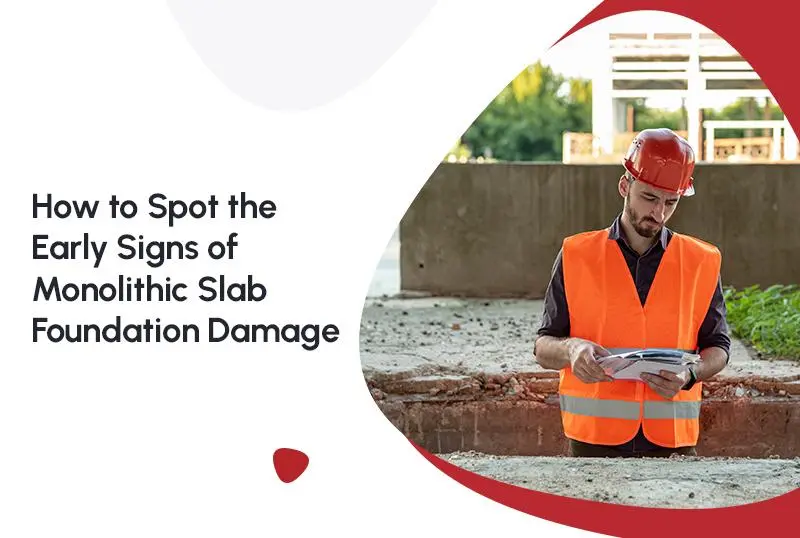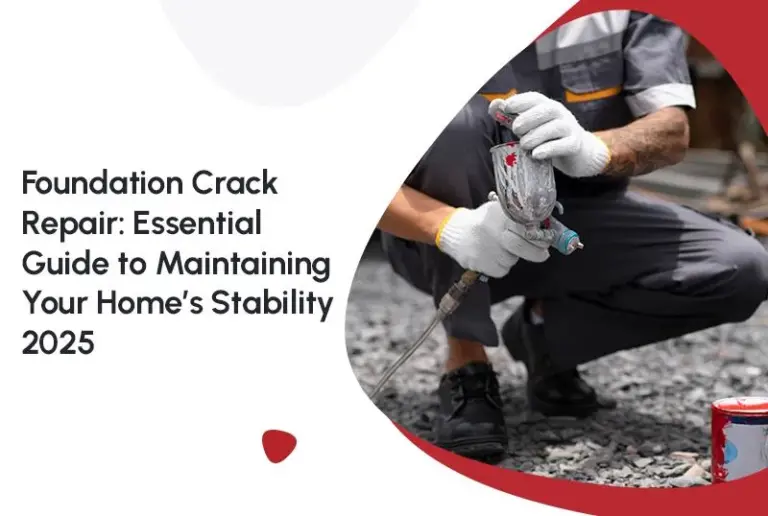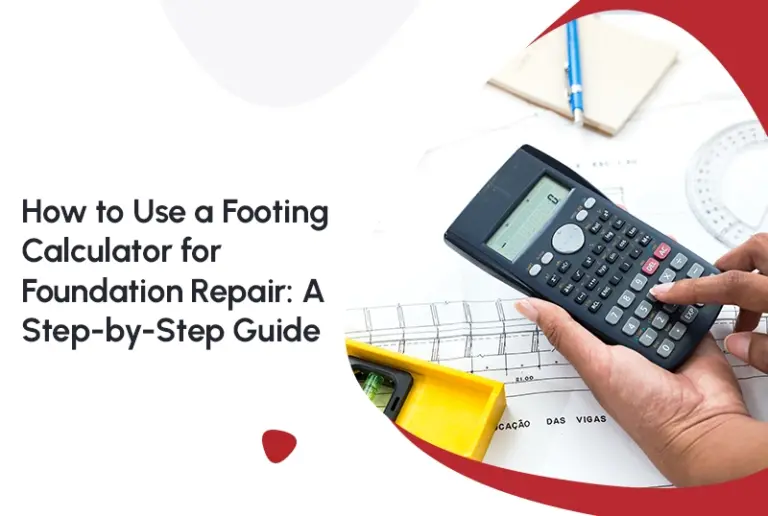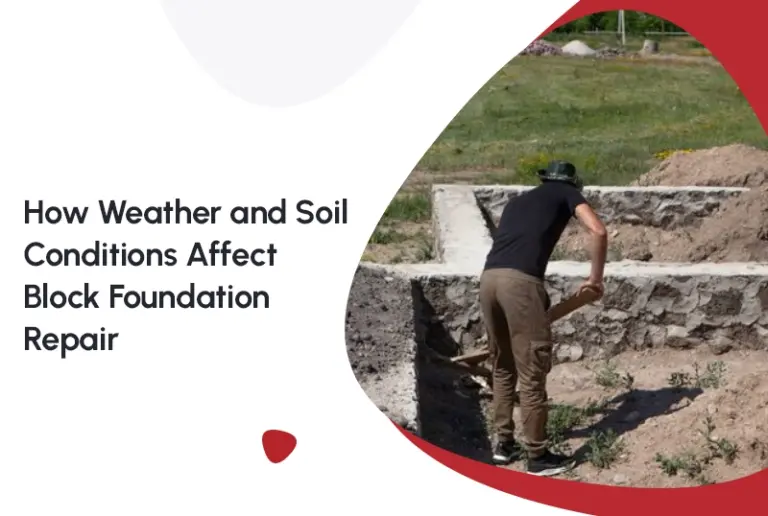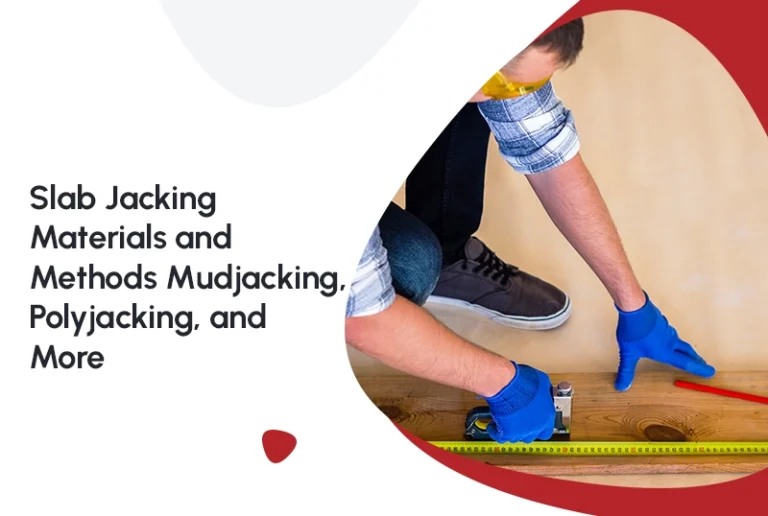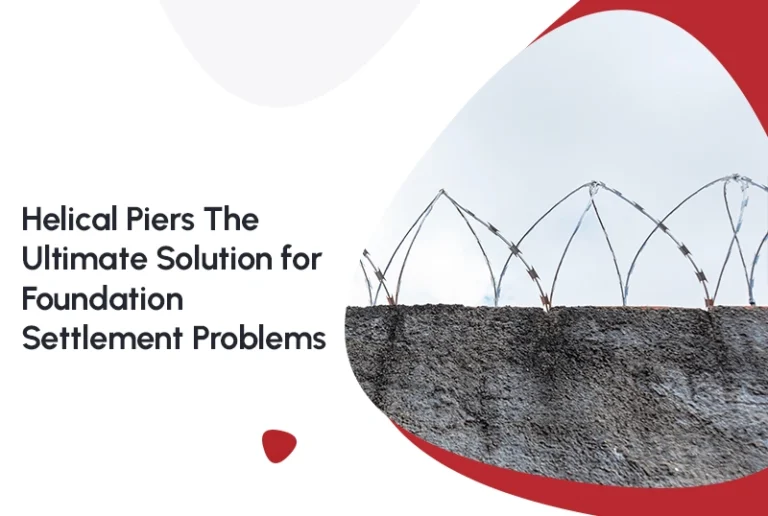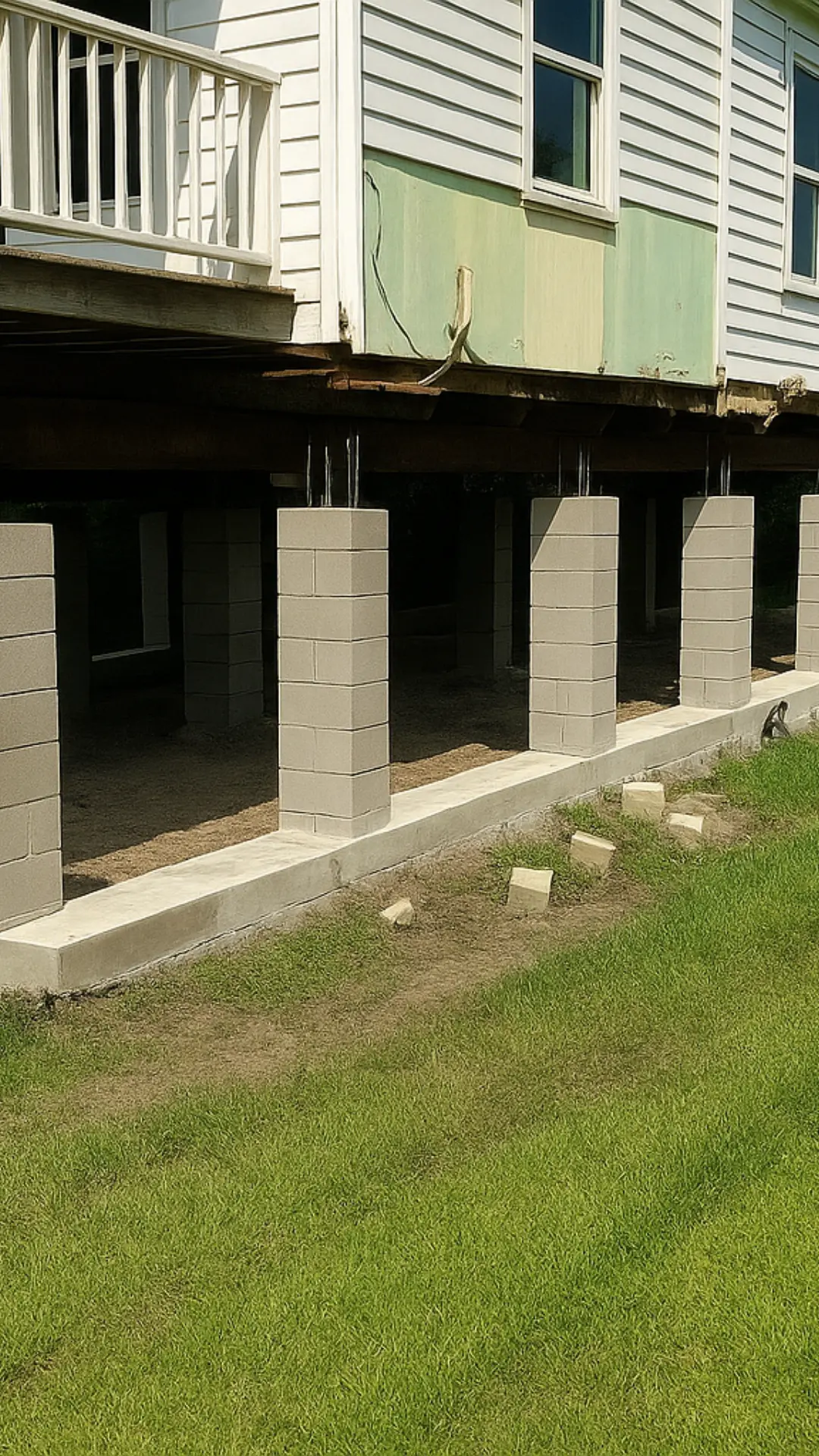Imagine this: You’re walking across your living room, and suddenly, you feel a dip under your feet, or perhaps you notice cracks creeping up the walls. Your first thought might be, “What’s happening to my home?” Well, if you have a monolithic slab foundation, the cause might be more than just age, it could be the foundation settling or shifting.
Monolithic slab foundations are known for their strength and durability, but like all foundation types, they can experience damage over time. Early detection of foundation issues is key to preventing small problems from becoming big, costly headaches. In this post, we’ll break down how to spot the early signs of foundation damage, the common causes, and how to deal with it before it spirals into something more serious. Let’s dive in!
Want to know more about foundation repair cost? Click here.
What is a Monolithic Slab Foundation?
A monolithic slab foundation is a single, continuous slab of concrete that serves as both the foundation and the flooring of a home. This type of foundation is poured all at once in one continuous piece, which means it’s strong and cost-effective. Unlike traditional foundations, which have separate footings and walls, a monolithic slab has a smooth and solid structure.
Monolithic slabs are particularly common in areas with warm climates because they offer excellent resistance to moisture and pests. However, soil conditions and external factors can still lead to cracks, shifting, or settling in your slab over time.
What Causes Damage to Monolithic Slabs?
Understanding the common causes of foundation damage can help homeowners take proactive steps to avoid major issues. Let’s explore the main contributors to monolithic slab foundation damage:
1. Soil Movement and Expansive Soil
Soil plays a huge role in the stability of your home’s foundation. Expansive soils, typically clay-based, can expand when wet and shrink when dry. This constant movement places stress on the monolithic slab foundation, causing it to shift or crack. If the soil around your home is unstable, it can push and pull on the slab, leading to cracks and misalignment.
Tip: If you notice signs of soil erosion or shifting around your property, it’s time to inspect your foundation. To prevent these issues, regular foundation drainage maintenance, like installing French drains, can help.
2. Water Damage and Hydrostatic Pressure
Water is both a blessing and a curse when it comes to foundations. While moisture helps soil remain compact, excess moisture around your foundation can lead to problems. Poor drainage, flooding, or plumbing leaks can increase hydrostatic pressure on the monolithic slab, causing it to shift or crack. In colder climates, freezing water expands and worsens cracks in your slab, causing further damage.
Tip: Ensure proper foundation drainage by keeping gutters and downspouts clear and grading the soil to direct water away from the home. If you’re noticing water pooling, installing a sump pump or French drain can help protect your home.
3. Plumbing Leaks
Plumbing issues under the slab can also wreak havoc on the foundation. Leaks from pipes can saturate the soil beneath your home, which weakens the foundation and contributes to settling. Plumbing leaks are often a slow and silent issue, so regular checks for leaks are essential to avoid water damage to the slab.
Tip: If you notice a drop in water pressure, or your water meter spins when the water is off, you may have a plumbing leak under your slab. Schedule an inspection for Under Slab Tunneling Fresno to find the root cause of the issue.
4. Construction Defects
Sometimes the problem lies not in the foundation’s exposure to the elements but in how it was constructed. If the slab was poured improperly or didn’t have the right reinforcement, such as proper rebar, it’s more prone to damage over time. Insufficient concrete strength or poor soil preparation during construction can also contribute to early foundation failure.
Tip: Always work with a certified, experienced contractor to ensure the quality of your foundation from the start. If you have concerns about an existing structure, Foundation Repair Fresno can help assess and fix the problem.
5. Tree Roots and Vegetation
Tree roots are surprisingly powerful and can cause significant damage to your slab foundation. As tree roots grow, they can infiltrate the slab and exert pressure on the concrete. Over time, these roots can widen cracks, or cause the slab to shift. Large trees planted too close to the home are particularly risky.
Tip: Keep trees at least 10–15 feet away from your foundation to prevent root intrusion. Regular landscaping maintenance is essential for keeping roots in check.
Signs Your Monolithic Slab Foundation is Damaged
Foundation problems often present themselves subtly at first, but by the time they become obvious, the damage may be significant. Here are the early signs you should watch for:
1. Cracks in the Concrete
Small cracks in the concrete surface are normal and often just cosmetic. However, large, visible cracks, especially those that are diagonal or widening, are a clear sign that something more serious is happening. Horizontal cracks are typically the most concerning as they suggest the foundation is under significant pressure.
Pro Tip: Measure the width of cracks regularly. If they exceed ¼ inch, you need professional inspection. Don’t wait too long; fixing cracks early can save you from costly foundation repair down the line.
2. Uneven Floors
One of the most noticeable signs of foundation settlement is uneven floors. If you’re walking across your floors and you notice they slope or feel bouncy, your foundation may be shifting beneath. Slab settling can cause floors to sink in certain areas, making them feel unstable.
Pro Tip: Use a long, straight object (like a board) to check for low spots in your floor. If the board rocks or shifts when placed on the floor, it’s a sign of uneven settling.
3. Sticking Doors and Windows
If doors or windows begin to stick, especially those near the cracks, it’s a red flag that your home’s foundation has shifted. Foundation movement can cause the frame to go out of alignment, making it harder for doors and windows to open and close properly.
Pro Tip: Check for gaps around door frames and window sills. If there’s a noticeable gap, it may indicate that the foundation is shifting.
4. Gaps Between Trim and Walls
Gaps between trim and walls, especially around door frames or in corners, are another sign of foundation movement. These gaps appear as the foundation settles and causes the structure to shift, pulling the walls and trim apart.
Pro Tip: Look for misaligned baseboards or uneven crown molding, which can indicate foundation problems.
5. Cracked Walls and Ceiling
As the foundation moves, it can cause pressure on the walls, resulting in cracks. Vertical or diagonal cracks near doors and windows often suggest settling or shifting of the slab. Ceiling cracks can also indicate structural movement, especially if they widen or worsen over time.
Pro Tip: If wall cracks are consistently visible after repairs or seem to be expanding, it’s time to consult a foundation expert.
How to Fix Foundation Damage in Monolithic Slabs
Fixing damage to a monolithic slab foundation isn’t a DIY job for most homeowners. Here’s how professionals handle it:
1. Piering (Helical or Push Piers)
Piering is one of the most common methods for stabilizing foundations. Helical piers are driven deep into the ground to lift and stabilize the structure, transferring the weight to solid, stable soil layers.
2. Slab Jacking (Mudjacking)
For sunken slabs, slab jacking (or mudjacking) involves injecting a grout mixture under the slab to lift and level it. This process is ideal for minor settling issues and can restore your floors to a level position.
3. Concrete Crack Injection
Small cracks in the slab can be sealed using epoxy or polyurethane injections. This fills the cracks and prevents water from seeping through, protecting the integrity of the foundation.
4. Foundation Drainage Solutions
To prevent future issues, foundation drainage systems like French drains and sump pumps may be installed. These systems divert water away from the foundation, preventing hydrostatic pressure buildup.
Conclusion
Identifying monolithic slab foundation damage early can save homeowners thousands of dollars in repairs and preserve the structural integrity of their homes. Whether you’re dealing with small cracks, uneven floors, or shifting walls, taking action now can prevent larger issues down the road.
A solid foundation is the backbone of your home, it holds everything together. Ignoring early signs of foundation damage may seem harmless at first, but it can lead to much bigger problems over time. In fact, 80% of structural home insurance claims are related to foundation movement, highlighting just how crucial it is to catch these issues early. Foundation problems don’t just affect your home’s structural integrity; they can also lead to costly repairs and even reduced property value.
If you notice any of the warning signs discussed, don’t wait until the damage worsens. Contact FNF Foundation Fresno today for expert inspection, assessment, and repair services to keep your home standing strong for years to come.
Our other services include:
1) Pier and beam foundation repair Fresno
2) House leveling Fresno
3) Concrete slab foundation repair Fresno
FAQs About Monolithic Slab Foundation Damage
Q1: How do I know if my foundation is damaged?
Look for visible signs such as cracks, uneven floors, and sticking doors. If you notice any of these, it’s a good idea to schedule a foundation inspection.
Q2: Can I repair cracks in my foundation myself?
Small, non-structural cracks can be sealed with epoxy injections or polyurethane foam, but for larger cracks or shifting foundations, it’s best to consult a professional.
Q3: What causes a monolithic slab to settle?
Common causes include expansive soil, poor foundation drainage, and water damage from plumbing leaks or weather changes.
Q4: How much does it cost to repair a monolithic slab foundation?
Repairs can range from $2,000 to $10,000 depending on the severity of the issue. Piering or slab jacking can be more expensive but may be necessary for significant settling.
Q5: How can I prevent future foundation damage?
Regularly inspect your foundation, keep gutters and drainage systems clear, and monitor for signs of water damage or soil movement.
